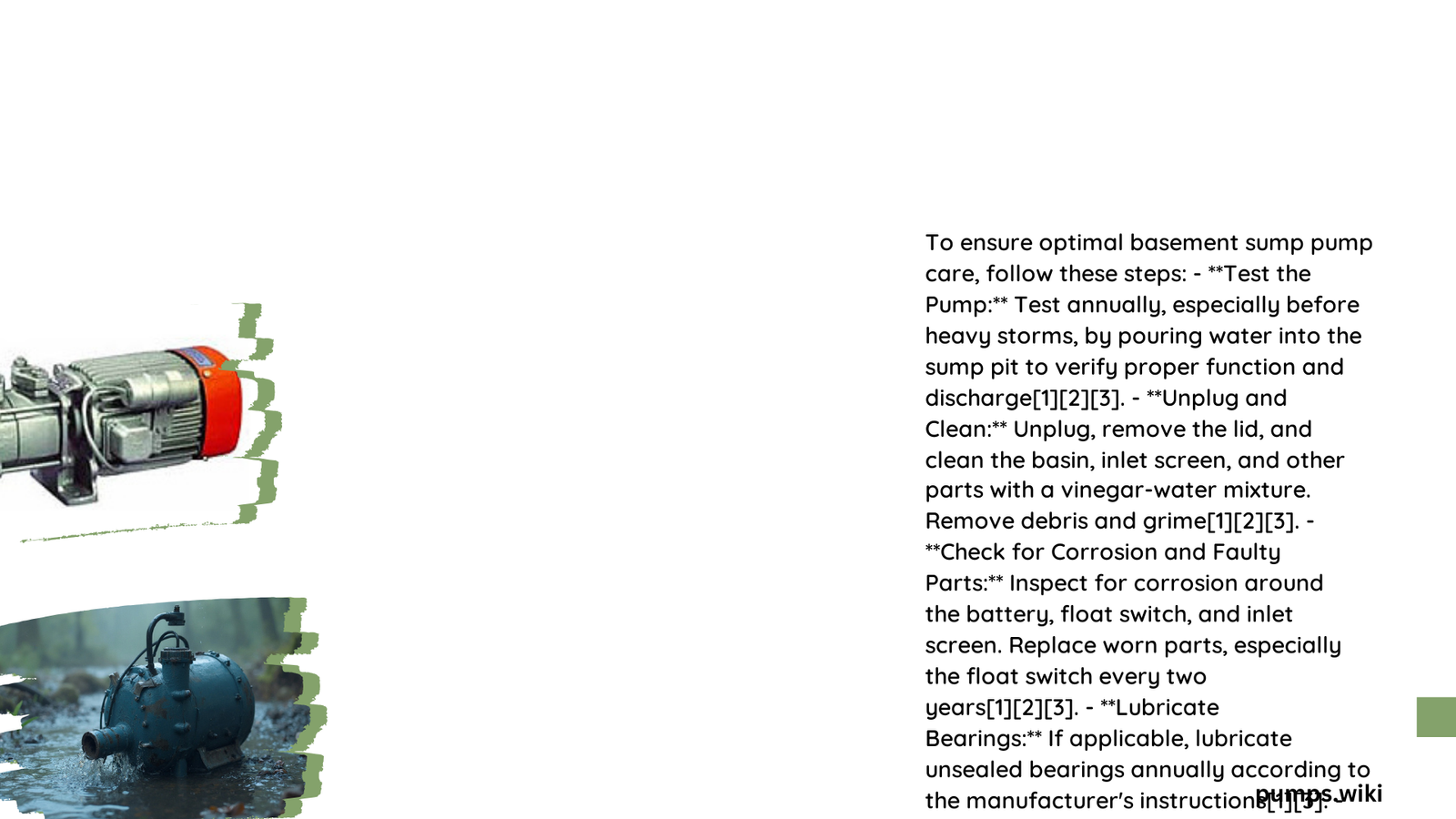Basement sump pump care is a critical home maintenance task that protects your property from water damage, prevents flooding, and ensures the longevity of your drainage system. Proper maintenance involves regular inspections, cleaning, and proactive troubleshooting to keep your sump pump functioning efficiently. Homeowners who invest time in systematic care can avoid costly repairs and potential basement water disasters.
Why Is Basement Sump Pump Care Critical?
Basement sump pumps are your first line of defense against water intrusion, but they require consistent attention to remain reliable. Without proper maintenance, these essential systems can fail when you need them most, potentially leading to extensive water damage, mold growth, and structural issues.
What Are the Primary Components of Sump Pump Maintenance?
Inspection Frequency and Techniques
| Maintenance Interval | Key Actions | Estimated Time |
|---|---|---|
| Monthly | – Check pump screen – Visual system inspection |
15-20 minutes |
| Quarterly | – Detailed component check – Clean inlet openings |
30-45 minutes |
| Annually | – Comprehensive system test – Deep cleaning |
1-2 hours |
Essential Inspection Steps
- Visual System Examination
- Inspect sump pit for debris
- Check discharge pipe alignment
-
Look for signs of corrosion or damage
-
Functional Testing
- Manually trigger float switch
- Pour water to simulate flooding
- Verify pump activation and water removal speed
How to Perform Thorough Sump Pump Cleaning?
Cleaning Preparation
- Required Tools:
- Bucket
- Soft brush
- Mild detergent
- White vinegar
- Protective gloves
- Safety glasses
Cleaning Process
- Unplug the sump pump before any maintenance
- Remove pump from pit carefully
- Clean pump exterior with vinegar solution
- Clear inlet screen/openings
- Inspect for wear or damage
- Reinstall pump securely
What Are Common Sump Pump Maintenance Challenges?
Potential Issues to Monitor
- Unusual motor noises
- Slow water removal
- Frequent cycling
- Visible rust or corrosion
- Inconsistent float switch performance
When Should You Replace Your Sump Pump?
Replacement Indicators
- Age over 7-10 years
- Frequent repairs
- Decreased pumping efficiency
- Visible structural damage
- Inconsistent performance during water tests
Pro Tips for Extended Sump Pump Life
- Install a battery backup system
- Use a high-quality check valve
- Consider professional annual inspection
- Keep pit clean and debris-free
- Monitor system performance consistently
Recommended Maintenance Schedule
| Timeframe | Action Items |
|---|---|
| Monthly | – Quick visual inspection – Test float switch |
| Quarterly | – Clean pump screen – Check electrical connections |
| Annually | – Comprehensive system test – Deep cleaning – Professional evaluation |
Cost Considerations
- Basic maintenance: $0-$50 (DIY)
- Professional inspection: $100-$250
- Emergency repairs: $500-$1,500
- Complete pump replacement: $500-$1,200
Conclusion

Effective basement sump pump care requires consistent attention, systematic inspection, and proactive maintenance. By following these guidelines, homeowners can significantly reduce the risk of water damage and extend their sump pump’s operational lifespan.
